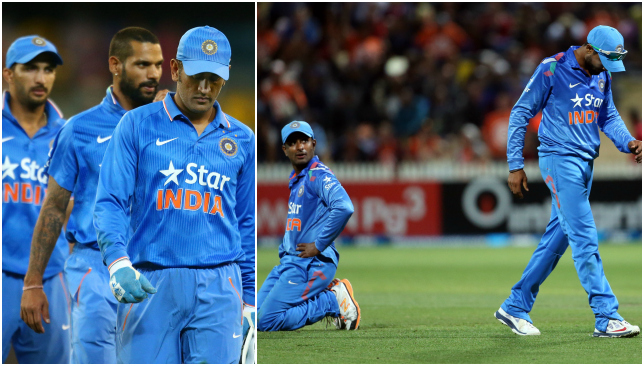
With a third straight loss at the hands of Australia in Melbourne, India lost a fourth series on the bounce under MS Dhoni’s leadership.
The last series India won under him? At home against a weak West Indian team in 2014.
There was a time when Dhoni couldn’t put a foot wrong. But now, whatever he does backfires.
With the Test side thriving now Virat Kohli is at the helm, let’s try and examine what has gone wrong in Australia before delving deeper into the issue.
The Bowling
So, how did those that performed admirably in the past become so pedestrian? Well, the pitches in England were unusually dry and hence assisted Indian bowlers, and the pitches in the World Cup were also a little tired because the tournament was held at the backend of a long Australian summer. By now, it’s quite evident that Indian bowlers need some assistance from the surface to restrict a decent batting line-up, and the pitches prepared for this ODI series are anything but bowler-friendly. Flat pitches dictate the bowlers do something spectacular in the air (be it extra pace/swing for the quicks or drift/dip for spinners) and, unfortunately, there isn’t enough class in this outfit to conjure up something out of nothing.
The Batting
While it’s more than fair to blame the bowling department for their inability to defend 300+ scores, it would be foolish to ignore the batsmen’s part in India’s shortcomings. If your strength is batting and you’re playing on batting-beauties, there are two ways to win—1. Bowl first and chase a slightly above-par score, or 2. Bat first and score 25-30 runs above par, for your bowlers would need the scoreboard pressure.
Dhoni won two tosses but elected to bat first on both occasions and while 308 and 309 were good scores, they weren’t 25-30 runs above par. Indian bowling isn’t equipped to defend par scores on good pitches and it showed. In the third ODI in Melbourne, India did score 15 above the mean and therefore, for the first time in the series they came close to winning. It seems that Indian batting hasn’t gotten used to the absence of a batting power-play, for they aren’t accelerating enough between overs 31-40. Thus far, India has scored 67, 67 and 60 in this period and that’s unacceptable if you’ve gone at around 5 runs-per-over for the first 30 overs and have 8-9 wickets in hand. Indian batsmen must address this issue, for they’re leaving too much to do in the last ten overs.